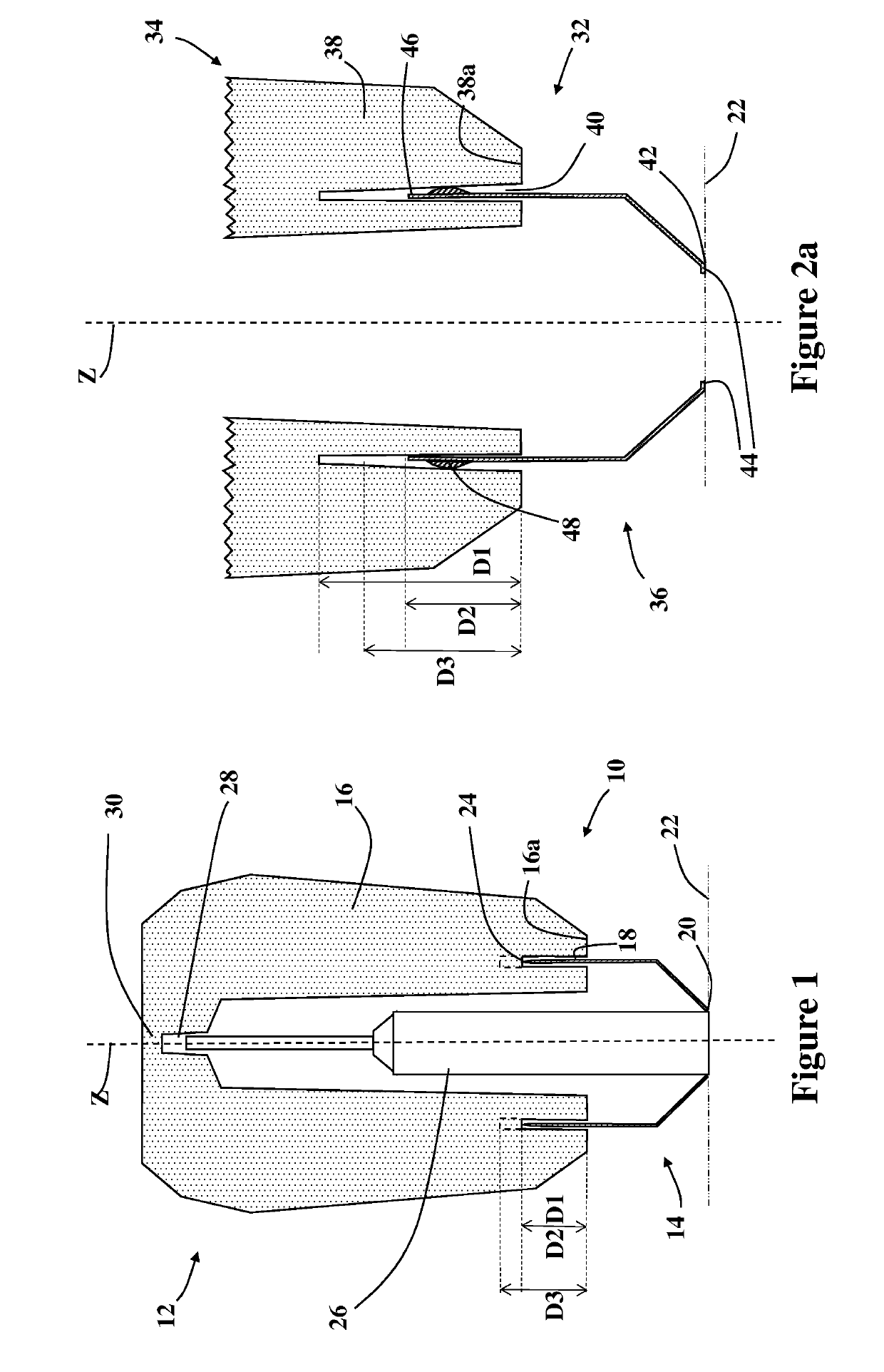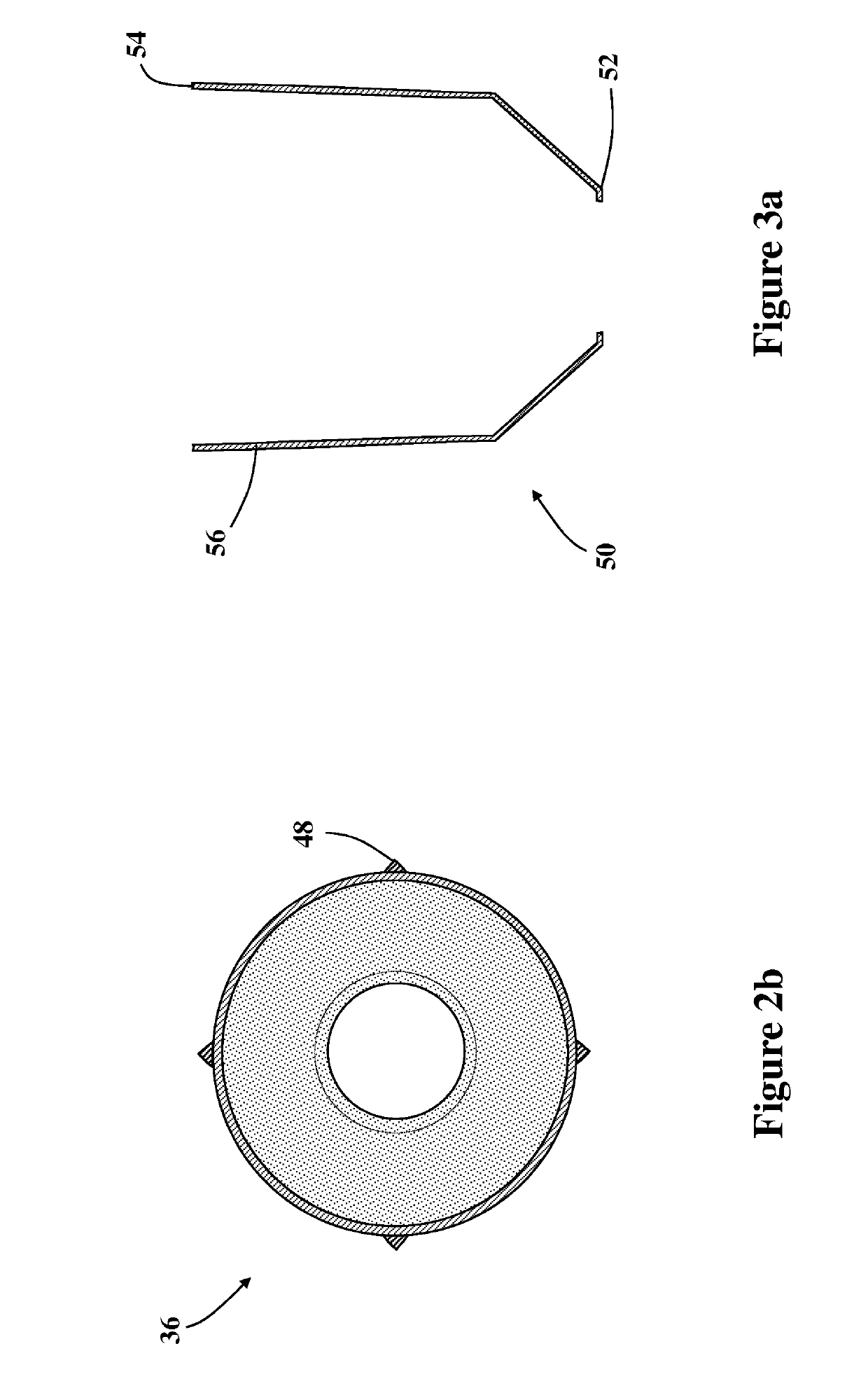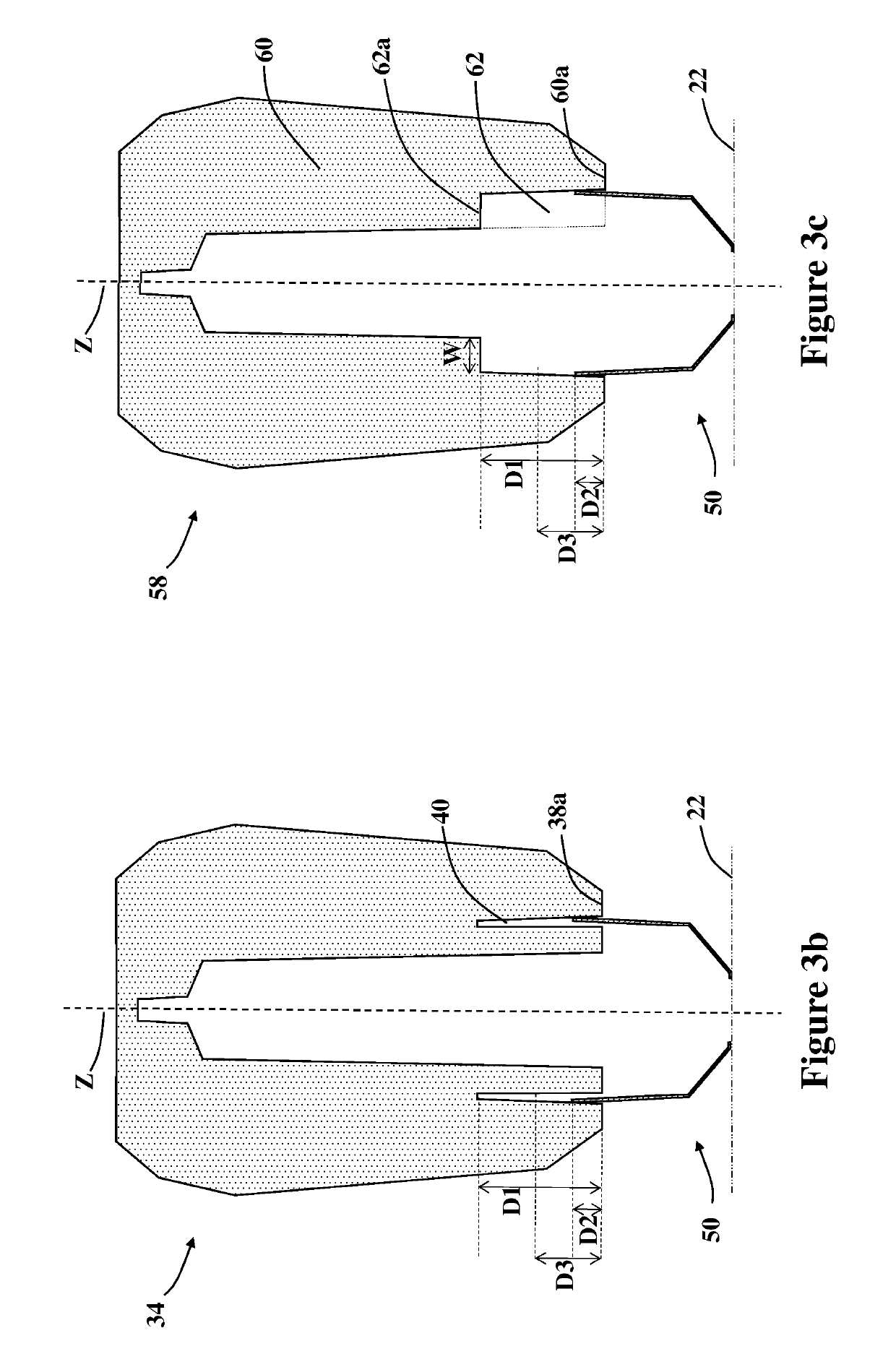Feeder system
- Summary
- Abstract
- Description
- Claims
- Application Information
AI Technical Summary
Benefits of technology
Problems solved by technology
Method used
Image
Examples
Embodiment Construction
[0079]Referring to FIG. 1 there is shown a feeder system 10 comprising a feeder sleeve 12 having a strength of 8-12 kN mounted on a tubular body 14. The feeder sleeve 12 has a continuous sidewall 16 which extends generally around a longitudinal axis Z; the sidewall 16 defines a cavity for receiving molten metal in use. The sidewall has a base 16a from which a groove 18 having parallel sides extends to a depth D1. The groove 18 is separate from the cavity.
[0080]The tubular body 14 is pressed from sheet steel and defines an open bore therethough (the bore axis lies along the longitudinal axis Z). The tubular body 14 tapers at its end away from the feeder sleeve to form a feeder neck 20 in contact with a moulding pattern plate 22. The opposite end 24 of the tubular body is sharpened to form a circular blade that projects into the groove 18 and is in contact with the feeder sleeve 12. The tubular body 14 projects to the full depth of the groove (D2=D1). On ram-up the sharpened end 24 of...
PUM
 Login to View More
Login to View More Abstract
Description
Claims
Application Information
 Login to View More
Login to View More - R&D
- Intellectual Property
- Life Sciences
- Materials
- Tech Scout
- Unparalleled Data Quality
- Higher Quality Content
- 60% Fewer Hallucinations
Browse by: Latest US Patents, China's latest patents, Technical Efficacy Thesaurus, Application Domain, Technology Topic, Popular Technical Reports.
© 2025 PatSnap. All rights reserved.Legal|Privacy policy|Modern Slavery Act Transparency Statement|Sitemap|About US| Contact US: help@patsnap.com



